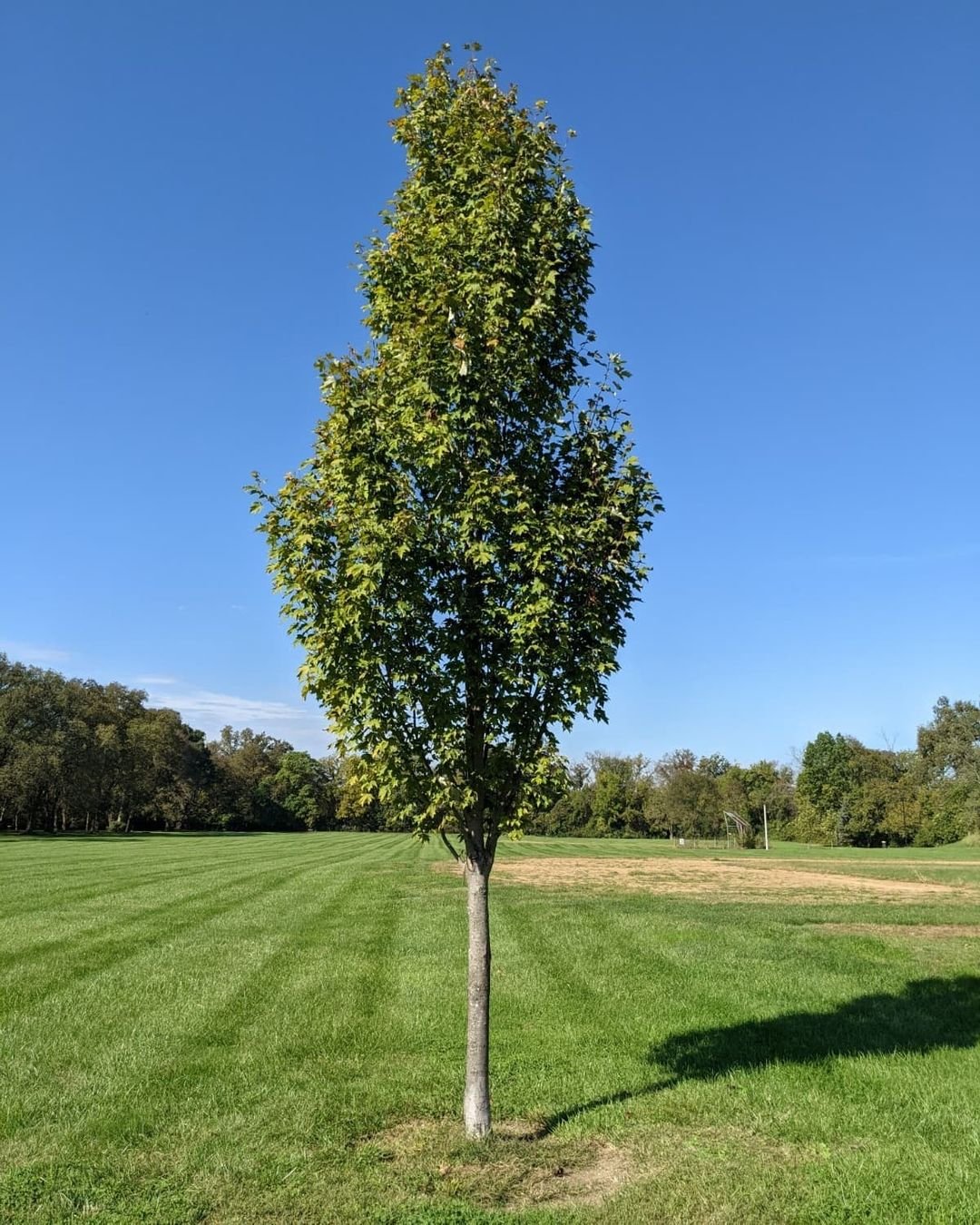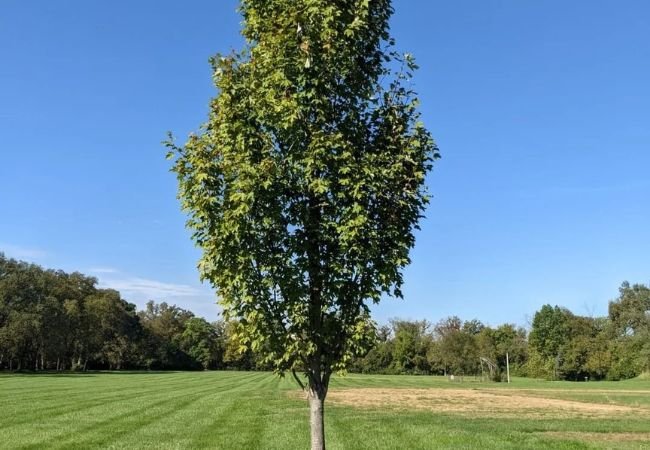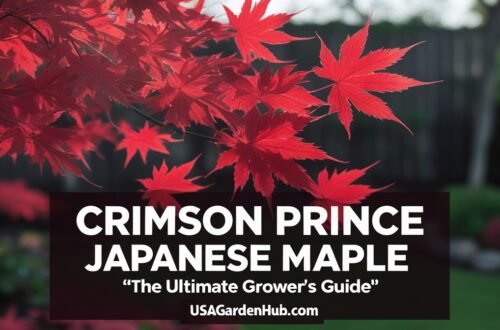Discover how to grow and care for the Armstrong Maple, a striking columnar tree perfect for narrow spaces. Learn expert tips on planting, maintenance, and landscape use in this detailed guide.
The Armstrong Maple (Acer x freemanii ‘Armstrong’) is a fast-growing, columnar hybrid maple tree known for its narrow, upright form and striking fall color. It thrives in full sun to partial shade, prefers well-draining soil, and is tolerant of urban conditions. This tree typically grows 50-70 feet tall but only 15-20 feet wide, making it ideal for narrow spaces.
As an arborist with over two decades of experience working with ornamental trees, I’m excited to share my knowledge about the Armstrong Maple. This unique tree offers a solution for those seeking vertical interest in limited spaces while providing the classic maple characteristics of beautiful fall color and shade.
Here’s a clear and concise chart for the Armstrong Maple Tree:
| Category | Information |
|---|---|
| Botanical Name | Acer x freemanii ‘Armstrong |
| Common Name | Armstrong Maple, Armstrong Red Maple |
| Plant Type | Deciduous Tree |
| Hardiness Zone | USDA Zones 3–9 |
| Sun Exposure | Full sun to partial shade |
| Soil Type | Moist, well-draining, slightly acidic soil |
| Watering | Regular watering, especially in dry conditions |
| Growth Habit | Upright, columnar |
| Height/Spread | 40–50 feet tall, 15–20 feet wide |
| Special Features | Fast-growing, vibrant fall color, ideal for narrow spaces |
Understanding the Armstrong Maple

Origin and Characteristics
The Armstrong Maple is a hybrid between the red maple (Acer rubrum) and silver maple (Acer saccharinum). It was developed at the Armstrong Nurseries in Ontario, California, and introduced in 1951.
Key features include:
- Narrow, columnar form
- Fast growth rate (3-5 feet per year when young)
- Vibrant fall color ranging from yellow to orange-red
- Tolerance to various soil conditions and urban environments
For more detailed information on maple tree species, visit the USDA Forest Service’s Maple Tree Guide.
Landscape Use
The Armstrong Maple is ideal for:
- Street tree plantings
- Narrow yard spaces
- Vertical accents in the landscape
- Creating living privacy screens
Planting Your Armstrong Maple
Timing
The best time to plant is during the dormant season, either in late fall after leaf drop or in early spring before bud break.
Site Selection
Choose a location with:
- Full sun to partial shade (at least 6 hours of direct sunlight daily)
- Well-draining soil
- Adequate space for mature height and width
Soil Preparation
Prepare the planting site by:
- Testing soil pH (aim for 5.5-6.5)
- Amending with organic matter if needed
- Ensuring good drainage
For more information on soil preparation for trees, check out Penn State Extension’s guide.
Planting Process
- Dig a hole twice as wide as the root ball and as deep
- Place the tree at the same depth it was growing in the nursery
- Backfill with native soil, tamping gently to remove air pockets
- Water thoroughly and apply a 2-3 inch layer of mulch, keeping it away from the trunk
Caring for Your Armstrong Maple
Watering
- Water deeply and regularly during the first growing season
- Once established, water during dry spells
- Avoid overwatering, as maples are susceptible to root rot
Fertilizing
- Apply a slow-release, balanced fertilizer in early spring
- Avoid fertilizing late in the growing season, which can stimulate growth vulnerable to winter damage
For guidelines on fertilizing trees, visit the International Society of Arboriculture’s website.
Pruning
- Prune in late winter or early spring before new growth begins
- Remove dead, diseased, or crossing branches
- Maintain the central leader to preserve the columnar form
Winter Protection
In colder regions:
- Apply a thick layer of mulch around the base of the tree
- Wrap young trees with burlap or tree wrap to prevent sun scald and frost cracks
Common Issues and Solutions
Potential Problems
- Verticillium wilt: Plant resistant varieties and maintain tree health
- Leaf scorch: Ensure adequate watering during dry periods
- Iron chlorosis: Address with iron supplements if soil pH is too high
For more information on maple tree diseases, visit University of Minnesota Extension’s maple tree disease page.
Landscape Design with Armstrong Maple
Companion Plants
Pair Armstrong Maples with:
- Low-growing shrubs like boxwood or yew for contrast
- Perennials that thrive in partial shade, such as hostas or ferns
- Spring-flowering bulbs for seasonal interest
Design Ideas
- Use as a natural privacy screen along property lines
- Plant in rows to create an allée effect
- Incorporate as vertical accents in mixed borders
Environmental Benefits
Armstrong Maples provide several ecological benefits:
- Carbon sequestration
- Air pollution reduction
- Habitat for birds and small wildlife
- Shade for energy conservation in urban areas
For more on the environmental benefits of trees, check out the Arbor Day Foundation’s resource page.
The Armstrong Maple is a versatile and attractive tree that offers solutions for many landscape challenges, particularly in narrow spaces. With its fast growth, striking fall color, and adaptability to various conditions, it’s an excellent choice for both urban and suburban environments. By following the planting and care guidelines outlined in this guide, you can enjoy the beauty and benefits of this unique maple variety for years to come. Happy planting!
For more gardening tips and plant care guides, visit usagardenhub.com.




